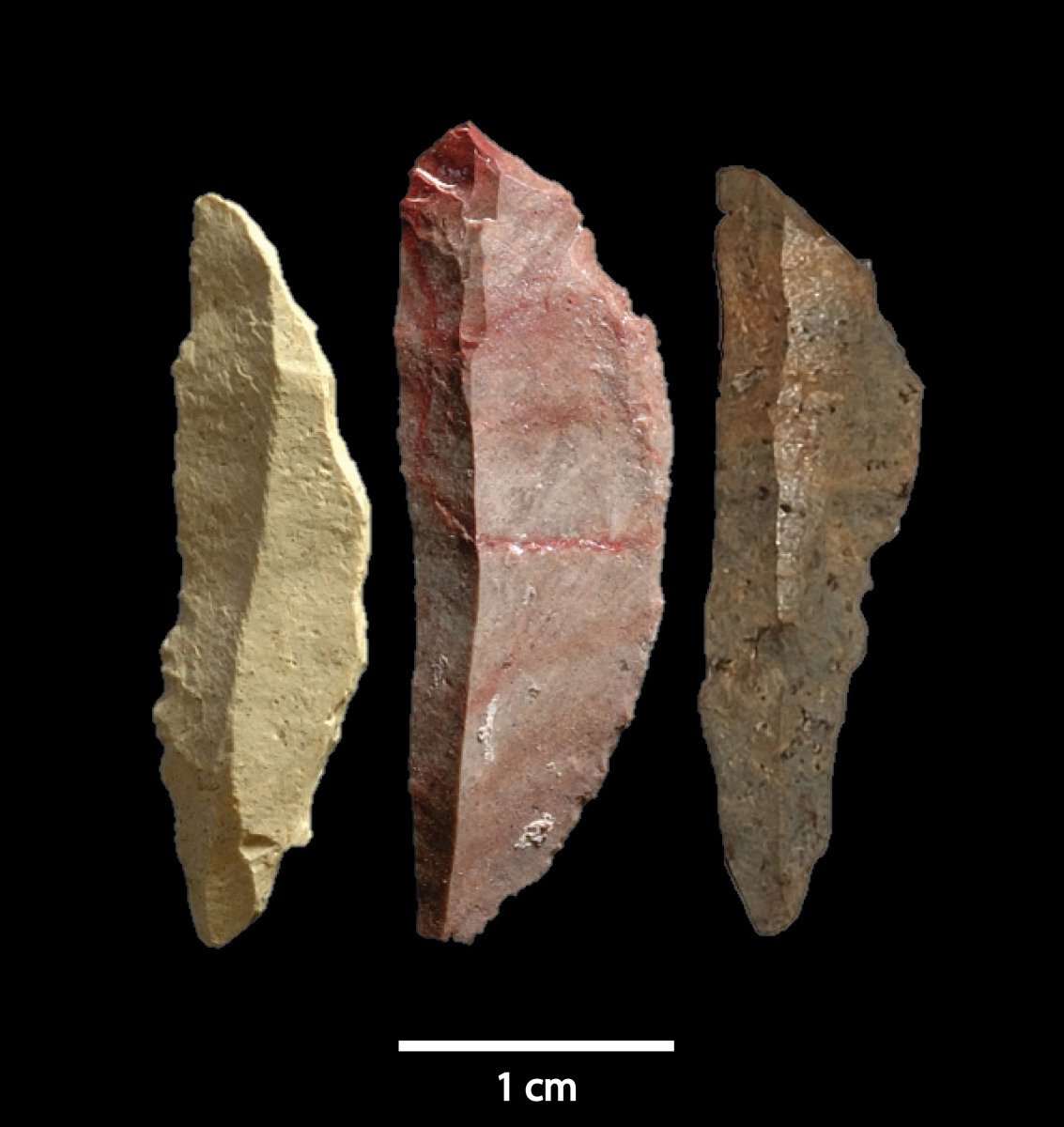Delicate stone arrowheads dating from 71,000 years ago have been unearthed in South Africa, providing the earliest indirect evidence for high-level human language and technological capacity.
The discovery, announced in the journal Nature, was made by  University of Cape Town archaeologist Kyle Brown and his colleagues at a site called Pinnacle Point on South Africa's southern coast.
University of Cape Town archaeologist Kyle Brown and his colleagues at a site called Pinnacle Point on South Africa's southern coast.
Digging through a 14m thick sediment layer dating back to over 70,000 years, the team uncovered a series of microliths - small, worked stone bladelets measuring between 2.5 and 3.5 centimetres in length - spanning an 11,000 year period.
The blades, which bear a strong resemblance to similar microliths made in more recent times and used as arrowheads, show consistent craftmanship and refinement over time suggesting that the technology needed to make them was being passed on over many human generations.
Making these tools would have been very complicated, involving selecting and transporting the right stones, heat-treating them to make them workable, turning them into bladelets and microliths, working bone or wood sections to fashion mounts for them, and then using other materials to fix them in place to form arrows or darts.
Such are the challenges in doing all of this, and over such a sustained period, these earth arrow-makers must have had language to enable them to transmit these complex ideas among themselves, the team surmise.
Previously, anthropologists and archaeologists have suggested that language didn't appear until 40-50,000 years ago, speculating that a genetic change that endowed individuals with enhanced cognitive abilities occurred around this time. This argument is rendered much less tractible in the face of these new findings.
And, more pugnaciously, as Kyle Brown and his colleagues point out in their paper, the discovery also probably explains why Neanderthals, the other hominin species around at the same time, didn't fare too well in the aftermath either.
"Microlith-tipped projectile weapons extended the effective range of lethal interpersonal violence, and would have conferred substantive advantage on modern humans as they left Africa and encountered Neanderthals equipped with only hand-cast spears."
- Previous Password Passed Down Before Hatching
- Next DNA smart-gel









Comments
Add a comment